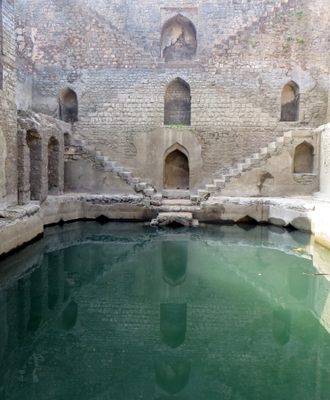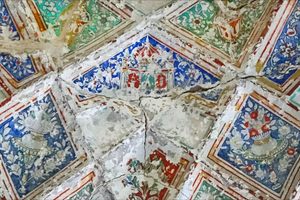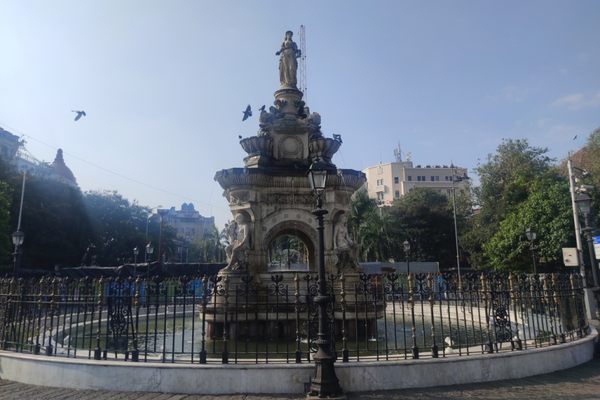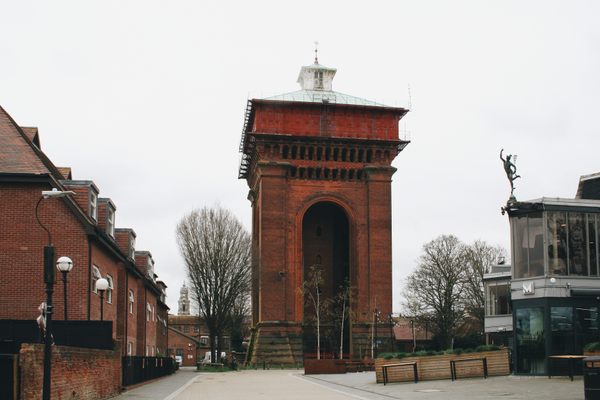About
To say the immense fortress of Mandu in Madhya Pradesh has an epic history does not begin to describe the almost Shakespearean drama that has taken place within its 19 miles of defensive walls. Mandu was caught in a violent tug of war between dynasties and kingdoms throughout the 15th and 16th centuries, which spawned plenty of emotional struggles along the way: sons poisoning fathers, friends poisoning friends, and beloved consorts taking their lives rather than being taken captive by enemies.
But through all this conflict and strife, there was no skimping on the architecture, with over 60 monuments strewn around. In fact, the entire site is on UNESCO’s “tentative list,” as though auditioning for Posterity. Some of the most unusual and sophisticated buildings of medieval India can be found at Mandu, and the water features were especially advanced. Considering the inhabitants could be under siege for years, water accessibility was paramount, so there are plenty of tanks, reservoirs, fountains and channels to be seen. There are also several stepwells on hand, the most beautiful of which is Ujala Baoli.
Regionally known as baori, baoli, bawadi, and vav, stepwells were efficient water-harvesting structures unique to the subcontinent, where thousands were built starting around 600 CE. They were perhaps the most significant and multifunctional buildings of their day, marvels of architecture, engineering, and art, with a primary purpose to provide water all year long. To do so, available groundwater had to be accessible at all times and in India, the levels could fluctuate from a relative trickle in dry seasons to a strong, steady flow during monsoons. Steps were required to reach water at its low ebb, but as the level rose, those steps—which could number well over a hundred—would submerge, and the cycle began again.
Stepwells in the dry western states of Rajasthan, Gujarat, and Haryana had to connect with water that could be many stories underground, but Madhya Pradesh was luckier, with a water-table much closer to the surface. Compared to the astonishingly large and deep Neemrana baoli, Ujala may seem diminutive and shallow. But in the stepwell firmament, size doesn’t always affect the visual wallop, and this case, a visitor can't help but be stunned.
Ujala (which means ‘light’) was built away from the heart of Mandu where the palaces, mosques, and tombs are easily located. Few tourists stray here and, in any case, they’d have to be hunting to find this hidden treasure. It is one eccentric-looking baoli compared to most, which are rigidly symmetrical. A hodge-podge of stairways—direct, zigzagging, or both—all aim for the calm green water. This is not a “normal” approach and they steps are strangely redundant, but combined with carved-out niches and arched chambers, the effect is sculptural. It’s also surreal, like a 3D painting by Giorgio De Chirico, empty and mysterious. Those shadowy arches are a bit sinister, despite the calm, almost magical, serenity of the surroundings.
Surprisingly clean, Ujala sneaks up unobtrusively in a verdant field where goats happily munch away. They have the right idea, this is the perfect spot for a picnic, sitting on the steps or in one of the abundant shade, a relief in the summer heat. But picturesque as Ujala is and surely was, its past prominence was no guarantee of a lasting future. The entire category of stepwells slid off history’s grid, and today, most are entirely unknown to the world (sad to say, even within India itself).
The advent of the British Raj, modern water pumps, and plumbing all rendered stepwells obsolete and, untethered from their main purpose, the vast majority became dilapidated, anonymous, filthy, and almost always heartbreaking. Ujala has managed to maintain its dignity, faring much better than most. Maybe alerting visitors its presence is, in fact, a bad idea: If this extraordinary stepwell becomes a big draw, the enveloping magic will evaporate.
Victoria Lautman is an arts and culture journalist with a focus on India. Her book, The Vanishing Stepwells of India, was published in 2017 by Merrell (London). Follow her @victorialautman.
Related Tags
Delhi and Rajasthan: Colors of India
Discover Colorful Rajasthan: From Delhi to Jaipur and Beyond.
Book NowPublished
April 9, 2018






























